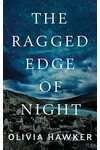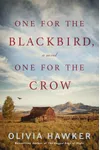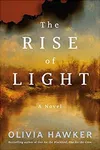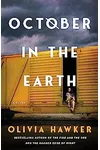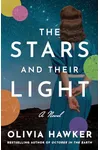Picture an American storyteller who weaves history’s forgotten moments into gripping, heart-tugging novels—meet Olivia Hawker! Writing under the pen name of Libbie Grant, this self-taught historical fiction author has captured readers’ hearts with her vivid prose and deeply human characters. From World War II Germany to the rugged American frontier, Hawker’s stories bring the past to life with emotional depth and meticulous research.
Born from a childhood split between the urban buzz of Seattle and the wild expanses of eastern Idaho, Hawker’s unique upbringing fuels her tales of resilience and survival. Now a Washington Post bestselling author, she’s proof that passion and persistence can turn dreams into reality, even without a formal degree.
The Making of Olivia Hawker
Raised in a family of artists, Olivia Hawker—real name Libbie Grant—grew up with creativity in her blood. Her parents’ divorce led to a childhood toggling between Seattle’s city streets and Idaho’s Rocky Mountain wilderness, where summers with her Mormon father shaped her love for the American West. Encouraged to chase her writing dreams without a fallback plan, Hawker never attended college, instead teaching herself the craft through sheer determination. Her early interest in genealogy, sparked by her Mormon roots, became a cornerstone of her storytelling, rooting her novels in real family histories.
Hawker’s career kicked off in 2018 with her debut novel under the Olivia Hawker name, The Ragged Edge of Night. Published by Lake Union, it marked her shift to historical fiction, a genre where her knack for emotional narratives and historical detail shines. Writing under multiple pen names, including Libbie Hawker and L.M. Ironside, she’s built a versatile career, but it’s as Olivia Hawker that she’s found her widest audience.
Olivia Hawker’s Unforgettable Stories
Hawker’s novels are like time machines, plunging readers into richly detailed settings with characters who feel like old friends—or foes. Her breakout, The Ragged Edge of Night (2018), follows a Franciscan friar in 1942 Germany who joins the resistance against the Nazis, blending hope and heartbreak in a tale inspired by her family’s past. Critics praised its eloquent prose and emotional weight, with Rhys Bowen calling it “harrowing and yet life-affirming.”
One for the Blackbird, One for the Crow (2019), a finalist for the Washington State Book Award and WILLA Literary Award, explores survival on the 1876 Wyoming frontier. Two families, bound by necessity, face betrayal and a brutal winter, their story woven with poetic grace. The Fire and the Ore (2022) dives into 19th-century Utah, tackling polygamy and sisterhood through three women’s lives, while October in the Earth (2023) follows a defiant wife’s journey across Depression-era America. Hawker’s style—lyrical, immersive, and grounded in historical truth—makes every page feel alive.
Themes of resilience, family, and moral courage run through her work, often drawn from her genealogical research. Whether it’s a war-torn village or a windswept prairie, her settings are characters in their own right, painted with a travel-guide-like vividness that pulls readers in.
Why Olivia Hawker Matters
Olivia Hawker’s impact lies in her ability to make history personal. Her novels don’t just recount events—they explore the human spirit, showing how ordinary people navigate extraordinary times. By rooting her stories in real family histories, she bridges past and present, reminding readers of the timeless struggles and triumphs that shape us. Her success as a self-taught author inspires aspiring writers, proving that talent and grit can outshine formal credentials.
Hawker’s work resonates with book clubs and solo readers alike, earning her a spot on Amazon’s Top 100 Bestselling Books of 2020 for One for the Blackbird, One for the Crow. Living on a sustainable microfarm in the San Juan Islands, she embodies the independence and creativity her characters often display, making her a unique voice in historical fiction.
- Pen Names: Libbie Hawker, Libbie Grant, L.M. Ironside
- Key Works: The Ragged Edge of Night, One for the Blackbird, One for the Crow, The Fire and the Ore
- Awards: Finalist for Washington State Book Award and WILLA Literary Award
- Home: Victoria, BC, and San Juan Islands, Washington
Snag One for the Blackbird, One for the Crow and dive into Olivia Hawker’s soul-stirring historical fiction! Her stories will leave you lost in time—and loving every minute of it.
